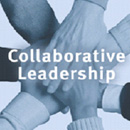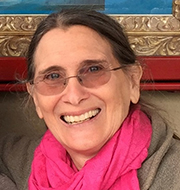As Executive-in-Residence at IMD, I am building on my decades of experience facilitating for clients from all sectors globally my trademark process of stategic relational engagement (SRE™) of stakeholders. I am focusing on the strategic position of value creation and competitiveness through SRE. I am distilling and synthesizing key teachable lessons for leaders who participate in IMD executive education programs . I am developing essential guidelines for practical applications in various contexts. These include internal stakeholder applications for boards and senior management whether horizontal across function or vertically in direct reports; external stakeholders whether customers, suppliers or willing partners; and more complex potentially adversarial external stakeholders (i.e.: activist shareholders, government regulators, NGOs and other civic groups, etc). Companies know they... more
Organizational Governance
We started 2011 with a magnificent hike through Verbier in the Swiss Alps. We got there by the fantastic Swiss public transportation system with the second to last segment on the St Bernard Express and the final segment on a Gondola: at every stage, we were surrounded by beauty! Shortly after I was honored to learn I was chosen as one of the 100 Top Thought Leaders in Trustworthy Business Behavior. Really nice personal and professional start to a new year. Wishing you the best in this year too!
I’m finding my niche, seven weeks into Executive-in-Residence at IMD: master bridge-builder; a role that has applicability in much of the executive education knowledge exchange being done here. I‘ve begun to focus on why businesses should engage with non-market, non-traditional stakeholders for current brand value as a basis for long term value creation with Paul Strebel who leads the High Performance Boards program. I’ll continue to develop this further with Didier Cossin who next year will take over this program. I’m writing about creating and sustaining mutually beneficial cross-sector partnerships to support an exciting body of research by Tom Malnight and Kees van der Graaf. And I’m finding my stride in my local village where the butcher, baker, winemaker and most... more
In my first week as Executive-in-Residence at IMD I observed and commented on executive education programs. One was led by Dan Denison whose focus includes organizational culture, leadership and the impact they have on performance and effectiveness, and Tom Malnight whose focus includes global strategy, evolutionary organizational change, internal growth and renewal. They guided participating executives through exercises designed to help them effectively tackle a changing and uncertain future. Another group of executives interacted with James Henderson whose focus includes helping companies achieve and sustain their competitive advantage, through a comparable exercise in developing strategies under times of uncertainty. And in my first gathering of faculty and senior staff with IMD president Dominique Turpin we as an internal team explored many of... more
I gave the closing remarks, My Leadership Journey, at an IMD program Strategies for Leadership (SL) led by Professor Ginka Toegel. 31 women executives from 20 countries participated in SL over four days during which I was a coach. SL focused on authentic leadership and how executives must learn to balance their own unique personality qualities with certain attributes critical to be perceived as a strong leader. Since Toegel started the program focused on natural preferences versus a fuller range of possible behaviors, with special emphasis on self-awareness of one’s innate strengths and weaknesses, I chose to delve into the latter. I shared how knowing yourself fully – standing confidently in the power of glorious capacities while simultaneously not being... more

I can tell you from having been on the front lines of the high-rollers who keep politicians in office that – while not all are looking for a special tax loophole for their industry or an appointment to the Court of St James – they absolutely have unparalleled access to elected office holders. So, I was struck by David Kirpatrick’s emphasis simply on no proof of corruption in his NYT piece “Does Corporate Money Lead to Political Corruption? I was at Harvard’s JFK School of Government a year before I was the NY Finance Chair and the National Vice Chair of the euphemistically named 1988 Democratic Presidential Victory Fund. That’s when the Times coined a phrase I agree with, “sewer money,”... more
As a board member of the World Policy Institute I heard my SheSource colleague Patricia DeGennaro, an expert on National Security issues, describe recent efforts to improve civilian-military cooperation in Afghanistan. She outlined a comprehensive update of the “whole of governance” philosophy and practice that integrates defense, diplomacy and development as integral, inter-related components to achieving effective foreign policy objectives. Her analysis of the impact this has on foreign policy was striking and it reinforced my experience-based perspective on all for- and not-for-profit capacity-building efforts local, national, regional or global. I have been a staunch advocate of cross-sector collaboration for decades, yet I still was jolted by DeGenarro’s stark statistics. Multiple indicators show positive progress in those areas with provincial... more
As a board member often chairing governance sub-committees, I have used Sarbanes-Oxley as the gold standard not just to guide procedures of for-profit but also of not-for-profit organizations. While the latter were not covered under Sarbanes-Oxley, I have advocated that non-profits who followed its guidelines would be at the cutting edge of best practices in good governance. The New York Times piece by Floyd Norris “Goodbye to Reforms of 2002” describes how congress already has substantially gutted Sarbanes-Oxley over the years and now plans to further remove most of its teeth. The 2002 Congress passed the Sarbanes-Oxley Act, which required public companies not just to have internal controls against fraud – something by law they had to do since 1977–... more
Akash Kapur’s New York Times article describes through his personal experiential lens, “creative destruction,” a concept Joseph Alois Schumpeter popularized in his 1942 book Capitalism, Socialism and Democracy. Kapur describes how innovative entrepreneurial development that can sustain long-term economic growth bringing wealth to some in previously impoverished areas, simultaneously often destroys the values of a culture, fabric of a community and the natural beauty of an environment. The July 2009 issue of the Chicago Journals Economic Development and Cultural Change’s articles address this phenomenon from different perspectives in various countries’ initiatives. Since I’ve long supported sustainable development initiatives in the US and throughout the world, I continue to explore with all types of leaders – from local communities to national governments... more

Development does not take place in a vacuum; it is intertwined inextricably with every aspect of the comprehensive institutional integrity. The whole always is greater than the sum of the parts: leveraged synergy advances specific sub-objectives. We will explore how to create and sustain horizontal and vertical collaboration for integrated organizational leadership. With guest panelists Kofi Boateng, COO of Africa America Institute, Bill Bohnett, Board member of Synergos Institute and Kona Goulet, Devlopment Director of EnlightenNext we explore this topic in the NYU graduate course I created and teach annually. Watch two- to three-minute video clips of each and if you have interest in seeing more of the discussion contact us.

